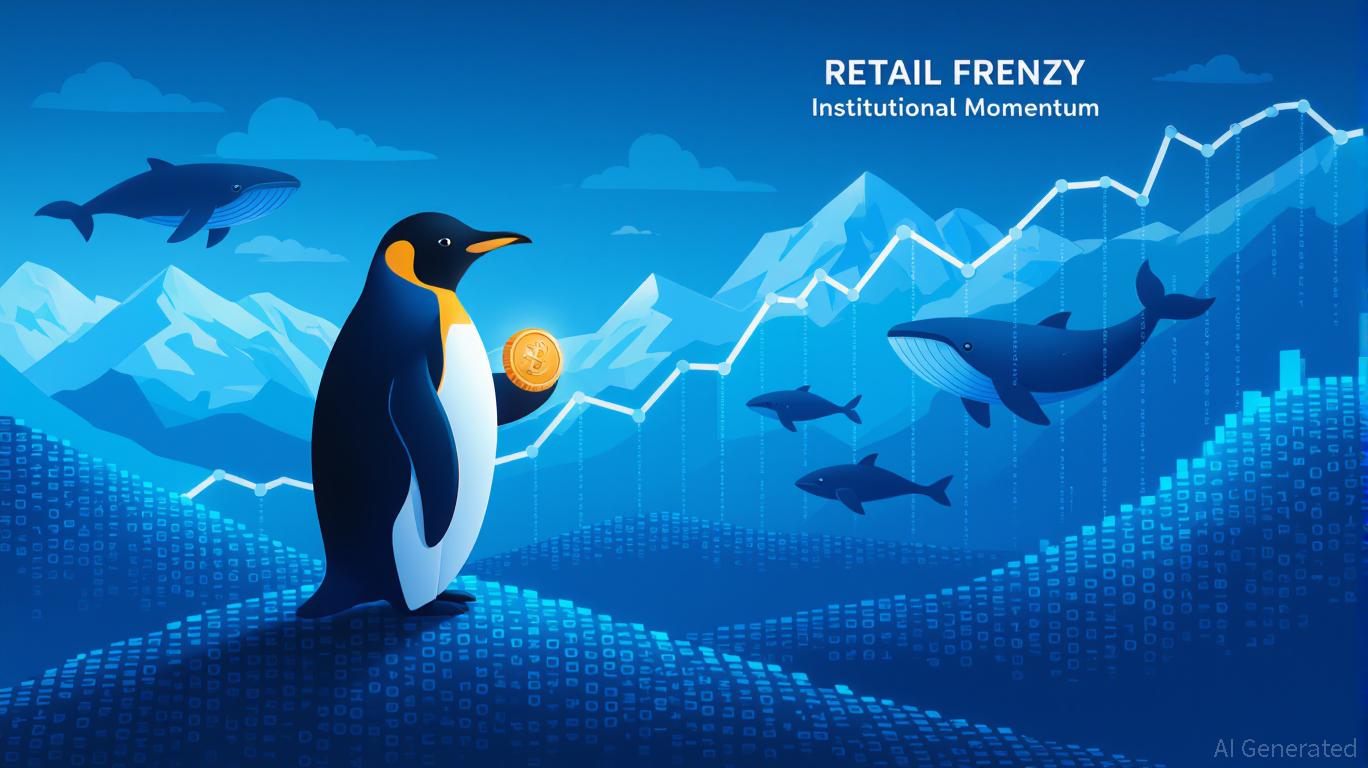Astar 2.0: The Next Generation of DeFi Infrastructure
- Astar 2.0, a next-gen DeFi platform, leverages hybrid AMM-CEX models and AI-driven tools to enhance cross-chain liquidity and smart contract security. - The platform achieved $1.399B TVL and $27.7B daily volume in Q3 2025, with strategic partnerships and integrations across BNB Chain, Ethereum , and Solana . - AI-enhanced auditing modules and EVM compatibility address 89% of DeFi contract vulnerabilities, driving 20% QoQ growth in institutional wallet adoption. - Tokenomics 3.0 caps ASTR supply at 10.5B
The decentralized finance (DeFi) sector is experiencing a significant transformation, propelled by advancements in cross-chain connectivity and improvements in smart contract performance.
Cross-Chain Liquidity: Connecting Networks on a Large Scale
Astar 2.0’s ability to facilitate cross-chain liquidity is built on its hybrid AMM-CEX framework, merging automated market
This growth in liquidity is further supported by Astar’s integration with leading blockchains such as
For business use cases, Astar 2.0’s scalability—handling up to 150,000 transactions per second (TPS) and confirming blocks in just 6 seconds—makes it suitable for high-throughput applications.
Smart Contract Efficiency: AI-Powered Security and Automation
Security flaws in smart contracts continue to pose a major threat in DeFi, with up to 89% of contracts found to have exploitable issues
The platform’s technical design also enhances smart contract performance.
Tokenomics 3.0, which restricts the total ASTR supply to 10.5 billion tokens, introduces an anti-inflationary mechanism and scarcity
Investment Considerations and Future Prospects
Astar 2.0’s emphasis on both cross-chain liquidity and smart contract optimization positions it as a strong competitor in the DeFi arena. Its hybrid architecture, AI-enhanced security, and strategic collaborations address major challenges in decentralized finance. For investors,
Looking forward, Astar’s 2026 plans include launching the Startale App and expanding integration with Polkadot’s Asset Hub, which could further improve cross-chain asset operations
Disclaimer: The content of this article solely reflects the author's opinion and does not represent the platform in any capacity. This article is not intended to serve as a reference for making investment decisions.
You may also like
Bitcoin News Today: Bitcoin's Unstable Holiday Periods Hide Average Gains of 6%
- Bitcoin's Thanksgiving-to-Christmas performance shows equal odds of rising or falling, with a 6% average seasonal return despite volatility. - Historical extremes include a 50% 2020 rally and 2022's 3.62% drop post-FTX collapse, amid a $2.49-to-$91,600 long-term surge since 2011. - 2025's $91,600 price reflects ongoing recovery from 2024's $95,531 peak, with institutional crypto adoption and macroeconomic factors shaping future trajectories. - Analysts advise dollar-cost averaging for retail investors, w

Australia Strikes a Balance Between Fostering Crypto Innovation and Safeguarding Investors with Updated Regulations
- Australia introduces 2025 Digital Assets Framework Bill to regulate crypto platforms under ASIC, creating "digital asset platform" and "tokenized custody platform" licenses. - The framework mandates custody standards, transparency requirements, and lighter regulations for small operators (<$5k per customer) to balance innovation with investor protection. - Global alignment with UAE and EU crypto regulations is emphasized, while addressing risks from past failures like FTX through stricter enforcement and

PENGU Token's Latest Price Fluctuations and Blockchain Indicators: An Analytical Perspective on Technical Factors and Institutional Activity
- PENGU token's recent volatility and on-chain activity spark debate over institutional involvement in the crypto market. - Technical indicators show conflicting signals: overbought RSI vs. positive MACD/OBV momentum since November 2025. - Whale accumulation and Solana integration suggest strategic buying, while team wallet outflows highlight market uncertainty. - Social media sentiment drives short-term price swings, but structural risks like tokenomics and regulatory ambiguity persist. - Institutional ad

GameStop's Profit Strategy: Short Sellers, Brick-and-Mortar Stores, and Interest Rate Expectations Intersect
- GameStop (GME) shares rose near 52-week lows amid high short interest and retail-driven speculation, with a potential short squeeze looming as open options activity surged. - Institutional investors cut $5.4B in MicroStrategy (MSTR) holdings, linking crypto-focused MSTR to GME's 2021 meme stock dynamics amid MSCI index exclusion risks. - A December Fed rate cut (85% probability) could boost retail spending and speculative appetite, countering bearish positioning despite GME's 21.8% Q3 revenue growth. - A
